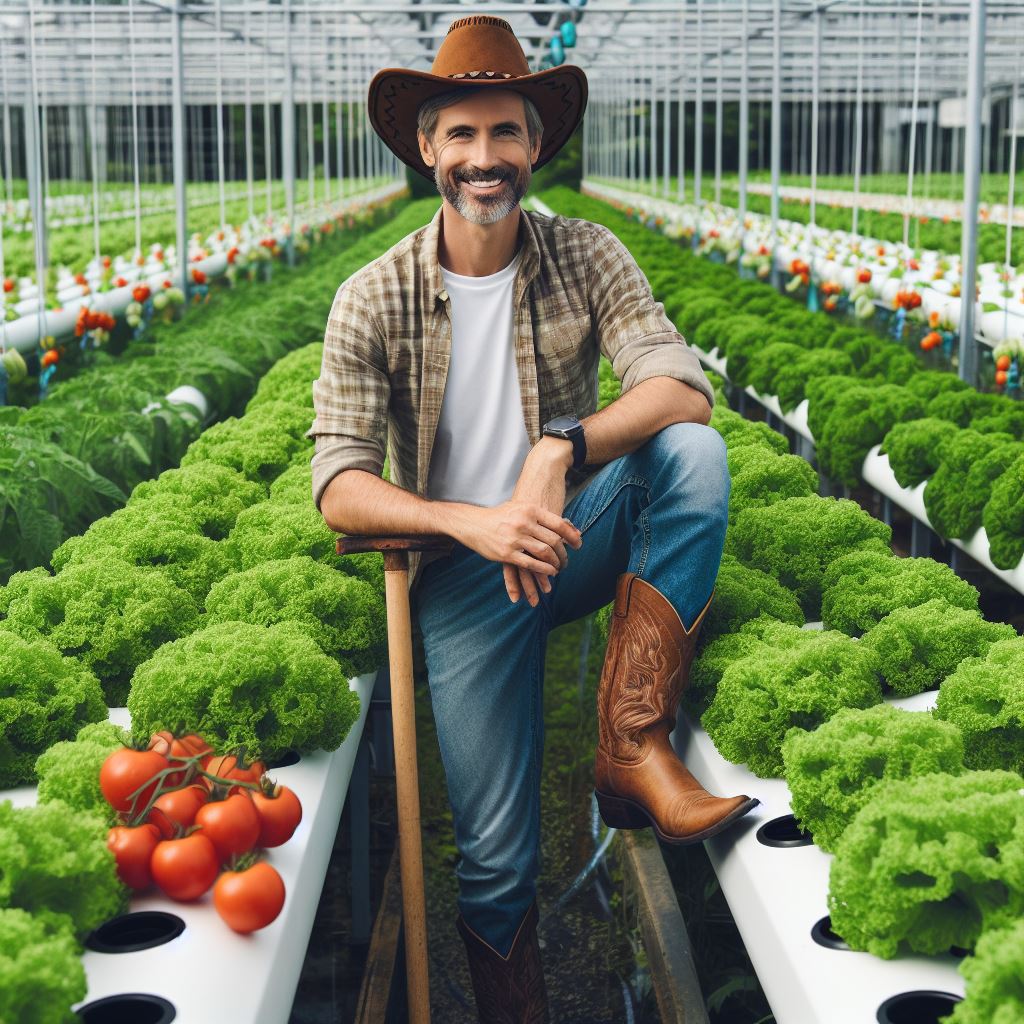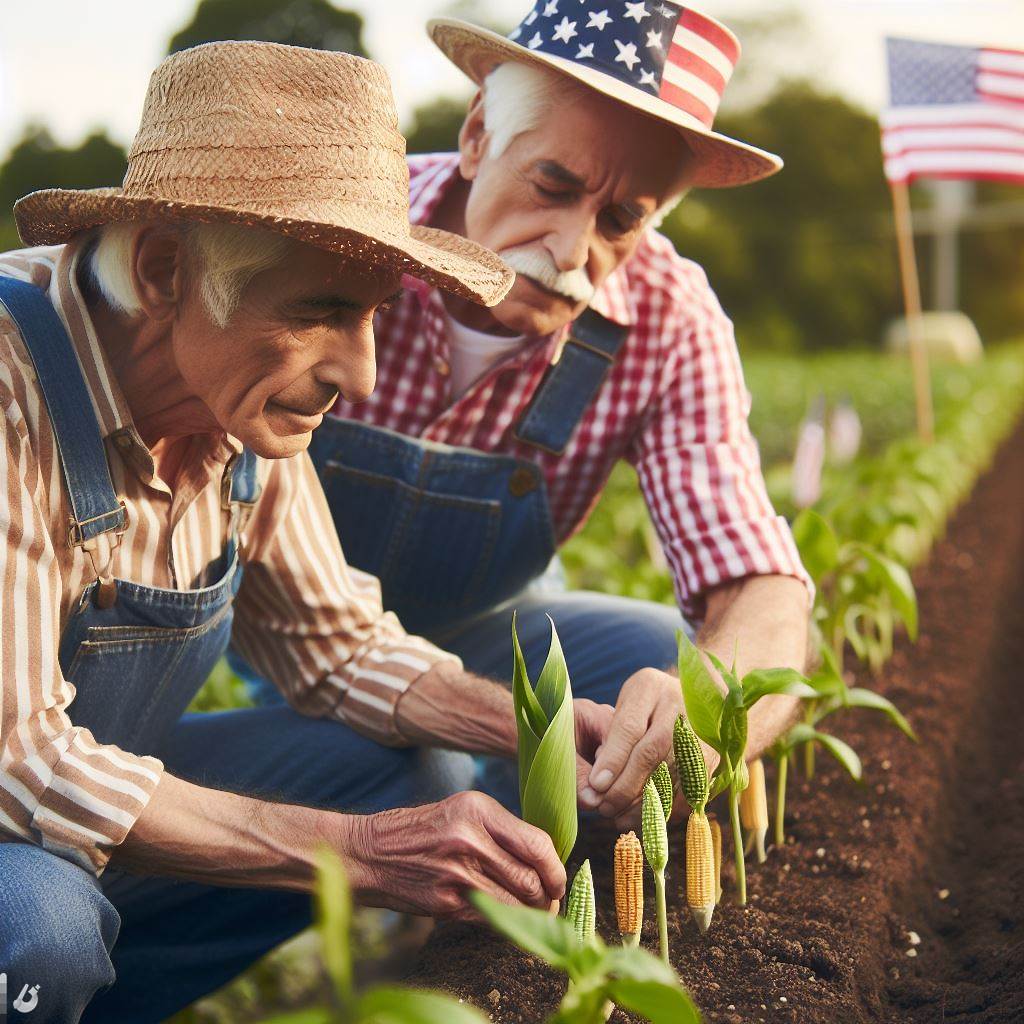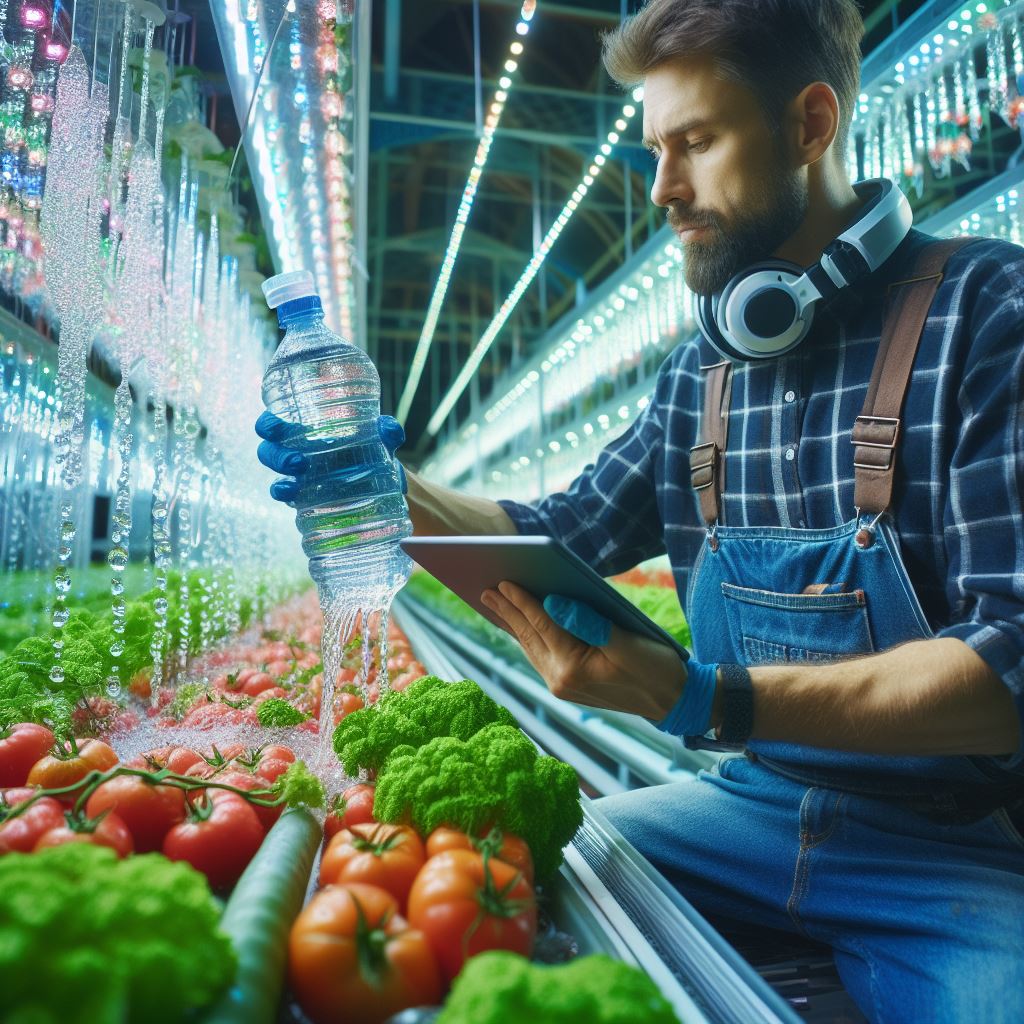Introduction
A. Brief Explanation of Urban Farming
Urban farming, a modern agricultural trend, involves cultivating crops and raising animals in urban environments. It’s reshaping cities globally.
B. Importance and Growing Popularity of Urban Farming
Urban farming isn’t just a trend; it’s a necessity. As cities expand, the demand for locally sourced, fresh produce rises.
The benefits include:
- Sustainability: Reduces food miles and carbon footprint.
- Food Security: Enhances local resilience against supply chain disruptions.
- Green Spaces: Converts unused urban areas into thriving green patches.
- Community Engagement: Fosters a sense of community and environmental awareness.
C. Transition to the Main Focus of the Blog Post
Now, let’s explore the dynamic fusion of technology and innovative techniques that propel urban farming into a sustainable future.
From vertical farming to IoT-driven cultivation, discover the tech transforming urban spaces into lush, productive landscapes.
Benefits of Urban Farming
Urban farming brings numerous benefits that positively impact the environment, society, and economy.
A. Environmental Benefits
The environmental benefits of urban farming are significant.
By minimizing the need for long transportation distances, urban farming plays a crucial role in reducing carbon footprint.
Food produced in urban areas requires less transportation compared to produce from traditional farms located far away.
Less transportation means lower emissions from vehicles, contributing to improved air quality.
Additionally, urban farming promotes the preservation of green spaces.
Abandoned lots and unused buildings are transformed into productive urban farms, preventing further urban sprawl and preserving vital greenspaces.
These green spaces provide habitats for various plant and animal species, contributing to increased biodiversity in urban environments.
B. Social Benefits
Urban farming also brings numerous social benefits to communities.
One of the significant social benefits is providing access to fresh and healthy food.
Transform Your Agribusiness
Unlock your farm's potential with expert advice tailored to your needs. Get actionable steps that drive real results.
Get StartedMany urban areas lack grocery stores or have limited access to nutritious food options, resulting in food deserts.
Urban farms address this issue by bringing fresh produce directly to these underserved communities.
By growing their own food, residents have control over the quality and safety of the produce they consume.
Urban farming also fosters community engagement and empowerment.
Residents become actively involved in the food production process, fostering a sense of ownership and pride in their communities.
They work collaboratively, sharing knowledge and resources to ensure the success of the urban farm.
Furthermore, urban farming offers education and skill development opportunities.
Training programs and workshops on agriculture and food production enable individuals to gain new skills and knowledge.
These skills can be valuable for future employment or even starting their own urban farming businesses.
C. Economic Benefits
Economically, urban farming has a significant impact.
It creates job opportunities in the agricultural sector, such as farmers, gardeners, and support staff.
The presence of urban farms also reduces food transportation costs.
Produce can be quickly distributed within the local area, eliminating the need for extensive transportation networks.
This not only reduces fuel consumption but also minimizes the associated carbon emissions.
Additionally, urban farming stimulates local economies by supporting local businesses and farmers’ markets.
Produce from urban farms can be sold in farmers’ markets, creating income opportunities and supporting local entrepreneurship.
Generally, urban farming offers a range of benefits that positively impact the environment, society, and economy.
From reducing carbon footprint and preserving green spaces to providing access to fresh food and creating job opportunities, urban farming is a sustainable solution for cities.
By embracing urban farming, communities can reap these benefits and contribute to a healthier and more sustainable future.
Read: Sustainable Farming via Tech Innovations
Technological Advancements in Urban Farming
In recent years, technological advancements have revolutionized the field of urban farming.
These innovations have not only improved efficiency and productivity but also addressed the challenges of limited space and resources.
Three major technological advancements in urban farming include vertical farming, hydroponics and aquaponics, and the use of robotics and automation.
A. Vertical Farming
Vertical farming involves growing plants in vertically stacked layers, typically in a controlled environment.
Showcase Your Farming Business
Publish your professional farming services profile on our blog for a one-time fee of $200 and reach a dedicated audience of farmers and agribusiness owners.
Publish Your ProfileBy utilizing vertical space, this technique maximizes crop production in urban areas where space is limited.
One of the key advantages of vertical farming is its ability to reduce land usage.
By growing crops in urban areas, vertical farms eliminate the need for long-distance transportation, reducing carbon emissions.
Moreover, vertical farming uses significantly less water compared to traditional farming methods.
The closed-loop system recirculates water and nutrients, minimizing waste.
Additionally, vertical farms are less susceptible to pests and diseases, as the controlled environment eliminates the need for pesticides.
Successful vertical farming projects include the Plantagon in Sweden, which is a multi-story greenhouse integrated into a residential building, and Sky Greens in Singapore, which uses rotating vertical towers for vegetable production.
B. Hydroponics and Aquaponics
These are two techniques that enable year-round cultivation of plants without using soil.
Hydroponics involves growing plants in nutrient-rich water, while aquaponics combines hydroponics with aquaculture.
In aquaponics, fish waste provides nutrients for the plants, creating a symbiotic relationship.
Both methods allow for precise control of nutrient levels, resulting in faster growth and higher yields.
The benefits of hydroponics and aquaponics are numerous.
These techniques require significantly less water than traditional soil-based agriculture as water can be recycled.
Furthermore, hydroponics and aquaponics are not limited by soil quality, allowing crops to be grown in areas with poor soil conditions.
Gotham Greens in New York City is an example of a hydroponic farm that utilizes rooftop greenhouses to grow high-quality produce.
Sweet Water Organics in Milwaukee is an aquaponic farm that produces both fish and vegetables, showcasing the potential for sustainable urban agriculture.
C. Robotics and Automation
Robotics and automation have become increasingly prevalent in urban farming, enhancing efficiency and reducing manual labor.
Robots are capable of performing tasks such as planting seeds, monitoring crop health, and harvesting produce.
For example, autonomous vehicles equipped with cameras and sensors can collect data on plant growth, allowing farmers to make informed decisions about crop management.
The impacts of robotics and automation on urban farming are substantial.
These technologies enable 24/7 monitoring and data collection, leading to increased crop yields.
Furthermore, the use of robots reduces labor costs, which can often be a significant expense in agriculture.
With automation, farmers can streamline their operations and focus on higher-value tasks such as crop planning and market analysis.
Essentially, technological advancements have paved the way for sustainable and efficient urban farming practices.
Vertical farming, hydroponics and aquaponics, and the use of robotics and automation have transformed the agricultural landscape in urban areas.
These innovations not only maximize limited space but also reduce water usage, eliminate the need for pesticides, and increase productivity.
As urban populations continue to grow, these technological advancements will play a vital role in ensuring food security and promoting sustainable urban development.
Read: Hydroponics 101: Basics & Benefits

Urban Farming Techniques
A. Container Gardening
- Container gardening refers to cultivating plants in pots, buckets, or any other type of containers.
- Benefits of container gardening include flexibility, accessibility, and the ability to control soil conditions and pests. However, its limitations include limited space and water requirements.
- To ensure successful container gardening, it is important to choose the right containers, use quality soil, provide adequate drainage, and select suitable plants for the location and season.
B. Rooftop Gardening
- Rooftop gardening involves creating gardens on the roofs of buildings, utilizing available space in urban areas.
- The advantages of rooftop gardening include maximizing space, reducing energy consumption, improving air quality, and providing insulation. However, considerations such as structural integrity, weight limitations, and irrigation systems are crucial.
- Successful rooftop gardening projects, such as Brooklyn Grange in New York City, have demonstrated the positive impact on food production, community engagement, and environmental sustainability.
C. Community Gardening
- Community gardening refers to the practice of cultivating a garden collectively by a group of individuals in a shared space.
- The benefits of community gardening include fostering social connections, promoting healthy eating habits, providing education and skill-sharing opportunities, and enhancing community beautification.
- Examples of successful community gardening projects include the P-Patch program in Seattle and the Ron Finley Project in Los Angeles, which have revitalized neighborhoods and empowered local residents.
D. Solutions offered by these gardening types
Overall, urban farming techniques such as container gardening, rooftop gardening, and community gardening offer innovative solutions to the challenges of limited space and food accessibility in urban areas.
1. Container Gardening
Container gardening allows individuals to grow plants in small spaces, providing flexibility and control over growing conditions.
By selecting suitable containers, soil, and plants, successful container gardens can thrive even in urban settings.
However, it’s important to be mindful of space limitations and water requirements.
2. Rooftop Gardening
Rooftop gardening takes advantage of unused space on buildings, bringing greenery into urban environments.
The benefits of rooftop gardens go beyond aesthetics, as they can reduce energy consumption, improve air quality, and provide insulation.
Building owners must consider structural integrity, weight limitations, and proper irrigation systems to ensure the success and safety of their rooftop gardens.
3. Community Gardening
Community gardening fosters collaboration and a sense of belonging among residents.
By sharing resources, knowledge, and labor, community gardens not only produce fresh, locally grown food but also promote social connections and provide educational opportunities.
Successful projects have transformed neighborhoods, improving the quality of life and empowering communities.
In general, urban farming techniques play a vital role in sustainable food production, community engagement, and environmental sustainability.
Whether it’s through container gardening, rooftop gardening, or community gardening, individuals and communities can actively participate in growing their own food, beautifying their surroundings, and creating a sense of unity.
Showcase Your Farming Business
Publish your professional farming services profile on our blog for a one-time fee of $200 and reach a dedicated audience of farmers and agribusiness owners.
Publish Your ProfileThese techniques offer creative solutions to the challenges of urban living and shape a greener, more resilient future.
Read: Top 5 Trends in Vertical Farming Tech
Challenges and Future of Urban Farming
A. Land Scarcity and Space Constraints
Urban farming faces a significant challenge due to the limited availability of land in urban areas.
As cities continue to expand, the availability of open spaces for farming decreases rapidly.
High demand for residential and commercial developments results in the conversion of potential farming spaces into concrete landscapes.
Fortunately, innovative solutions have emerged to address these space challenges in urban farming.
One approach is vertical farming, where crops are grown in stacked layers, utilizing vertical space.
This technique maximizes land utilization and allows for higher crop yields.
Another solution is rooftop farming, where roofs of buildings are transformed into productive green spaces.
These techniques offer practical solutions to the land scarcity issue faced by urban farmers.
B. Cost and Affordability
Starting and maintaining urban farms can be financially demanding.
The high cost of land, equipment, and infrastructure is a significant barrier for aspiring urban farmers.
Additionally, operational costs, such as water and energy expenses, can also be substantial.
To promote affordability in urban farming, various initiatives and strategies have been implemented.
Community-supported agriculture (CSA) programs connect local communities with farmers, allowing them to share the costs and benefits of farming.
Additionally, urban farming collectives have emerged, where individuals pool their resources and collaborate to reduce costs.
Using sustainable farming practices and efficient resource management also helps reduce expenses and increase overall affordability in urban farming.
C. Policy and Regulatory Framework
A supportive policy and regulatory framework are essential for the growth of urban farming.
Cities that recognize the value of urban agriculture have implemented policies that encourage and facilitate its practice.
These policies may include zoning regulations, tax incentives, and streamlined licensing processes to support urban farming initiatives.
Several cities have effectively implemented urban farming regulations.
For instance, in Amsterdam, rooftop farms are encouraged, and urban agriculture is integrated into the city’s spatial planning.
Seattle has also implemented initiatives that promote urban farming, such as allowing farming activities in public spaces and facilitating farmers’ markets.
These cities serve as examples of how well-designed regulations can foster the growth of urban farming.
The future of urban farming policies lies in further advancement and expansion.
As the importance of sustainable food systems becomes more evident, policymakers are increasingly recognizing the role of urban farming in achieving food security and resilient cities.
The development of comprehensive policies, including financial support, education programs, and land-use planning, will be crucial for the future success and growth of urban farming.
In essence, urban farming faces several challenges, including land scarcity, high costs, and limited policy support.
However, through innovative techniques, cost reduction strategies, and supportive regulations, these challenges can be overcome.
Urban farming holds great potential for providing fresh, local, and sustainable food in urban areas, and with the right tools and support, it can become a vital component of future food systems.
Read: Automated Farming: Pros & Cons Explored
Conclusion
According to the benefits discussed earlier, urban farming brings numerous advantages to urban areas.
The role of technology and innovative techniques cannot be underestimated in transforming urban farming.
It is crucial to acknowledge the significant impact that technology and techniques have on urban farming.
In the end, it is essential for individuals to explore and support urban farming initiatives.
By getting involved or supporting such initiatives, we can contribute to a sustainable and greener urban environment.
Urban farming not only provides fresh produce but also promotes community engagement and self-sufficiency.
Technology and techniques will continue to shape the landscape of urban farming in the future.
So, let’s embrace urban farming and take advantage of its numerous benefits for our urban spaces.
Together, we can create a healthier and more sustainable future by supporting urban farming initiatives.
Showcase Your Farming Business
Publish your professional farming services profile on our blog for a one-time fee of $200 and reach a dedicated audience of farmers and agribusiness owners.
Publish Your Profile



